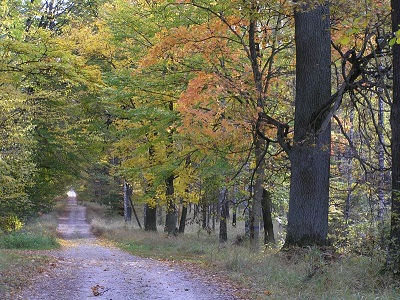 Asset Publisher
Asset Publisher
Sale conditions
Sale conditions of wood are specified by the regulation of Director – General of the Sate Forests.
Within the framework of the individual sale , the foresters try to meet the fast growing demand, because more and more people use wood in order to heat their houses. Contrary to general opinion, these are not only village people, even though they prevail among recipients. The growth of firewood demand is the result of occurrence of new housing estates built in the suburbs of large agglomerations, where houses are usually equipped in fireplace heating installations.
Firewood is not only the most ecological heat source, but also is much more attractive in respect of relation of price and electric efficiency, rather than cola, oil, gas or electric power.
In recent years, the Sate Forests increased the sale of firewood of one third – up to over 4 million cubic meters annually. Firewood is not only the most ecological heat source, but also is much more attractive in respect of relation of price and electric efficiency, rather than cola, oil, gas or electric power. Some of customers choose already prepared and cut into pieces wood, the others very willingly obtain it by themselves after arranging all details and fulfilling particular safety conditions, and after paying the fee; that concerns mainly so called "thinnings". Such a raw material is very cheap, that is why many people from village areas profit from such possibility.
 Asset Publisher
Asset Publisher
 Asset Publisher
Asset Publisher
Lasy Nadleśnictwa Opole
Lasy Nadleśnictwa Opole
Lasy Nadleśnictwa Opole położone są w całości na terenie województwa opolskiego
Lasy Nadleśnictwa Opole położone są w całości na terenie województwa opolskiego
Lasy Nadleśnictwa Opole położone są w całości na terenie województwa opolskiego, swoim zasięgiem administracyjnym obejmuje 695,5 km2, w tym: powiaty Brzeski (z gminą Lewin Brzeski), Oleski (z gminami Dobrodzień i Zębowice), Opolski (z gminami: Chrząstowice, Dąbrowa, Komprachcice, Niemodlin, Ozimek, Miasto Ozimek, Prószków, Tarnów Opolski, Tułowice i Turawa) i Miasta Opole. W sumie w granicach administracyjnych znajdują się 4 powiaty i 14 gmin.
Sąsiadującymi nadleśnictwami są:
Nadleśnictwo Kup i Turawa - od strony północnej,
Nadleśnictwo Olesno - od strony północno-wschodniej,
Nadleśnictwo Lubliniec - od strony wschodniej,
Nadleśnictwo Zawadzkie - od strony południowo-wschodniej,
Nadleśnictwo Strzelce Opolskie - od strony południowej i południowo-wschodniej,
Nadleśnictwo Prószków - od strony południowej i południowo-zachodniej,
Nadleśnictwo Tułowice – od strony południowo-zachodniej,
Nadleśnictwo Brzeg - od strony północno-zachodniej.
Nadleśnictwo składa się z jednego obrębu leśnego|:
– Opole, o powierzchni 22 945,66 ha (dane wg stanu na 01.01.2024r.).
Nadleśnictwo podzielone jest na 14 leśnictw:
01 Narok, 02 Dąbrowa, 03 Lipowa, 04 Suchy Bór, 05 Walidrogi, 06 Grotowice, 07 Dąbrowice, 08 Knieja, 09 Krasiejów, 10 Grodziec, 11 Zawada, 12 Chrząstowice, 13 Dębska Kuźnia, 14 Leśnictwo Szkółkarskie Zawada








